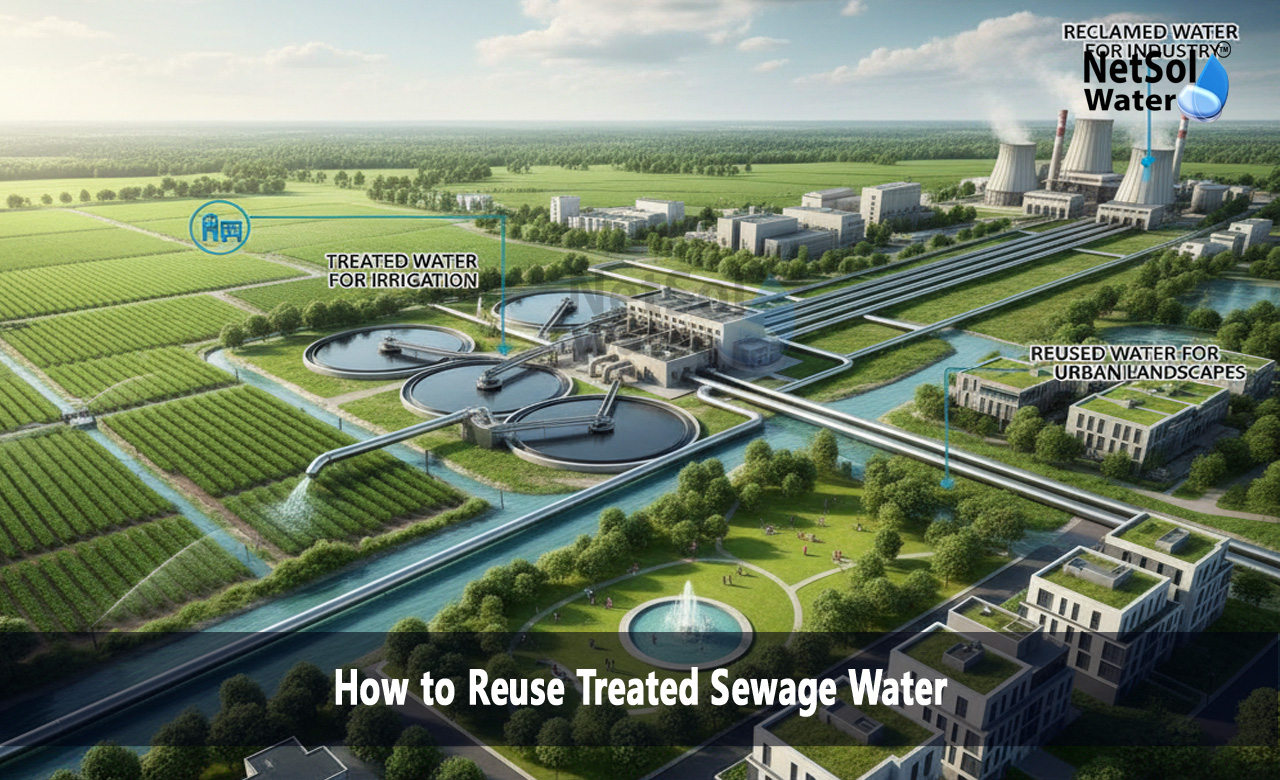How to Reuse Treated Sewage Water?
How to Reuse Treated Sewage Water matters for cities that face water shortage and growing demand. Netsol Water is the leading provider of wastewater solutions. Reusing treated sewage water can save freshwater sources and reduces costs for many users. Inthis blog, we will explain how to reuse treated sewage water. We will also explore the benefits of reuse for industries and communities. We will also cover steps to make reuse safe and meet local standards. Netsol Water offers custom plants and training to help cities and industries.
Benefits of Reusing Treated Sewage Water
Reusing treated sewage water can ease pressure on groundwater and surface water. Let us have a look on some benefits of reusing treating sewage water.
Industrial Use
Industries can use treated sewage water for cooling, cleaning and some process needs. Companies save money when they reduce freshwater intake. Firms also lower their impact on local water bodies by using treated water within their plant. Many industries already use treated water for cooling towers and boiler feed when the quality matches the need. Plants must set up separate piping and controls so treated water does not mix with potable supplies. This step keeps worker safety high. Netsol Water can design plants that match industry needs and local regulations.
Agricultural and Landscape Use
Treated sewage water suits irrigation for parks, farms and roadside plantations when treatment meets agricultural standards. Farmers can use this water to grow crops that do not require drinking water quality. Municipal councils can irrigate public green areas with treated water. Using treated water in these areas cuts municipal water use and eases seasonal shortages. Managers must ensure that treatment removes harmful pathogens and that irrigation methods prevent direct human contact. Drip irrigation and subsurface systems reduce exposure. Training for users helps maintain safety. Netsol Water supports users with training and monitoring plans so the reuse system stays safe and effective.
Read: Sewage Treatment Plant Manufacturer
Safety Standards and Treatment Levels
Safety makes reuse acceptable to regulators users and the public. Let us have a look on some treatment levels and monitoring steps.
Treatment Stages and Disinfection
Treatment must remove solids and reduce pathogens before reuse. Primary and secondary steps remove large and organic matter. Advanced steps use filtration and disinfection to lower disease risk. Common disinfection methods include chlorination and ultraviolet light. Each method has strengths and limits. For irrigation and industrial use managers choose methods that match the target use. The system must also include final filtration to cut turbidity. Clear water protects equipment and helps disinfectants reach microorganisms. Operators must set process controls and alarms so the treatment keeps stable performance. Netsol Water offers plants that meet standard quality targets and that operate with simple controls.
Monitoring and Testing
Monitoring proves the water meets the chosen standards. Regular testing checks microbial counts chemical indicators and solids. Operators log results and act when values drift from limits. This step keeps users confident in reuse. Simple on site tests combined with periodic lab checks maintain a strong control system. Data helps operators adjust disinfection dose and filter cleaning schedules. Public agencies often require reports and audits. Good record keeping makes compliance easier and shows the reuse system works as planned. Netsol Water provides monitoring plans and training to help teams follow the rules.
Conclusion
How to Reuse Treated Sewage Water can change how cities and industries manage their water. Netsol Water is the leading partner for planning andmaking sewage treatment plant. If you want to learn more or request a consultation contact Netsol Water for a clear plan that fits your site and budget.
Contact Netsol Water at:
Phone: +91-9650608473
Email: enquiry@netsolwater.com



